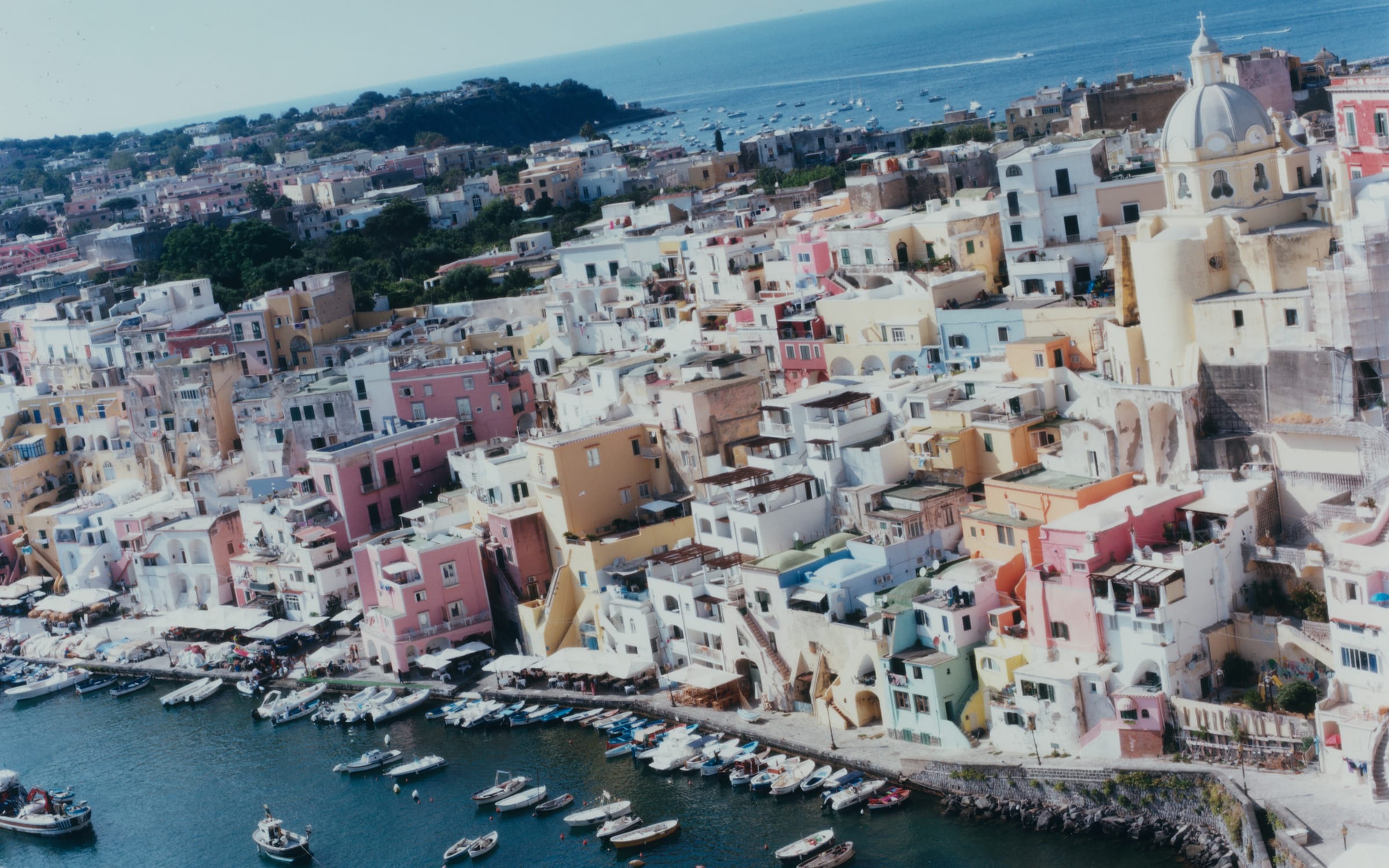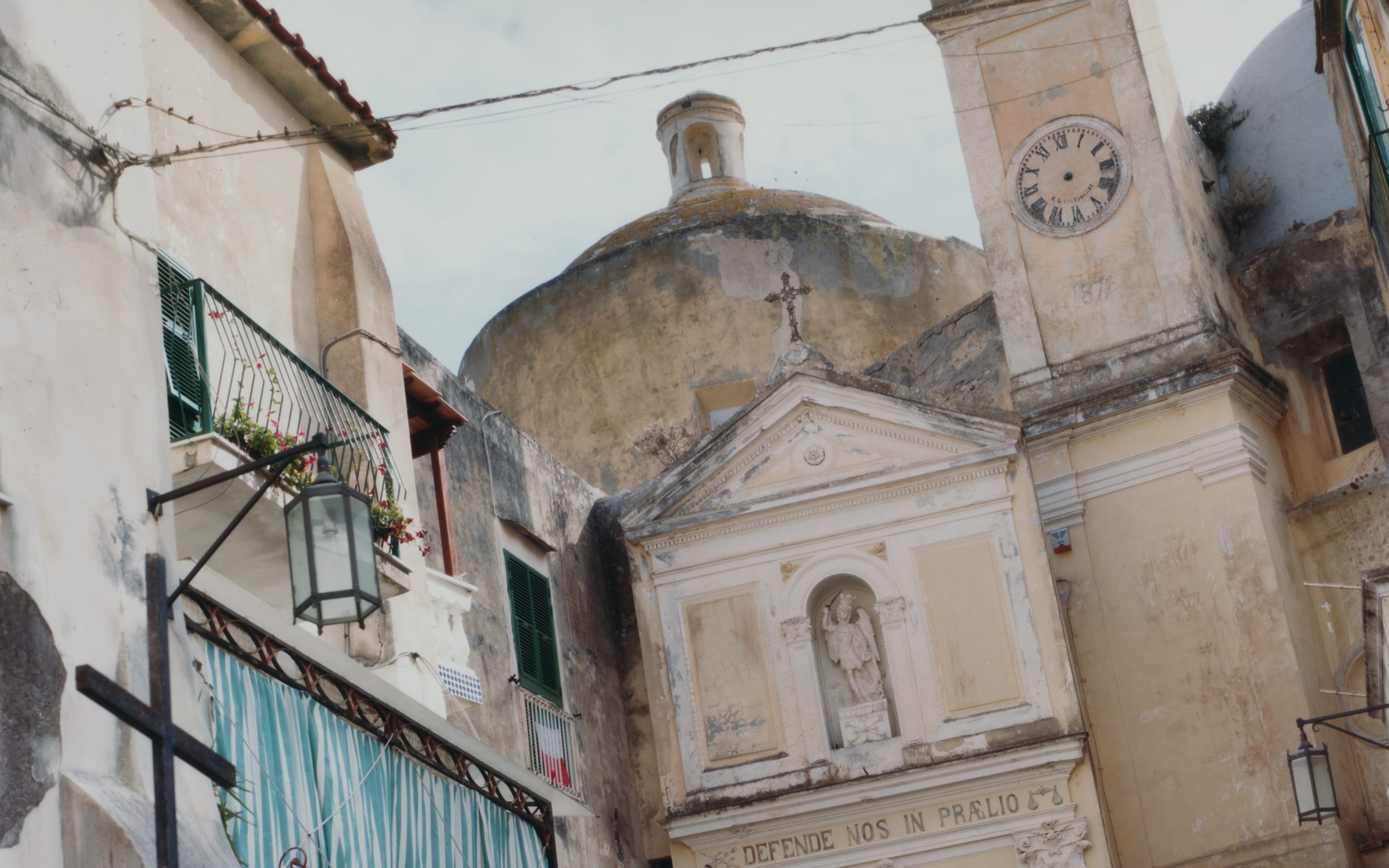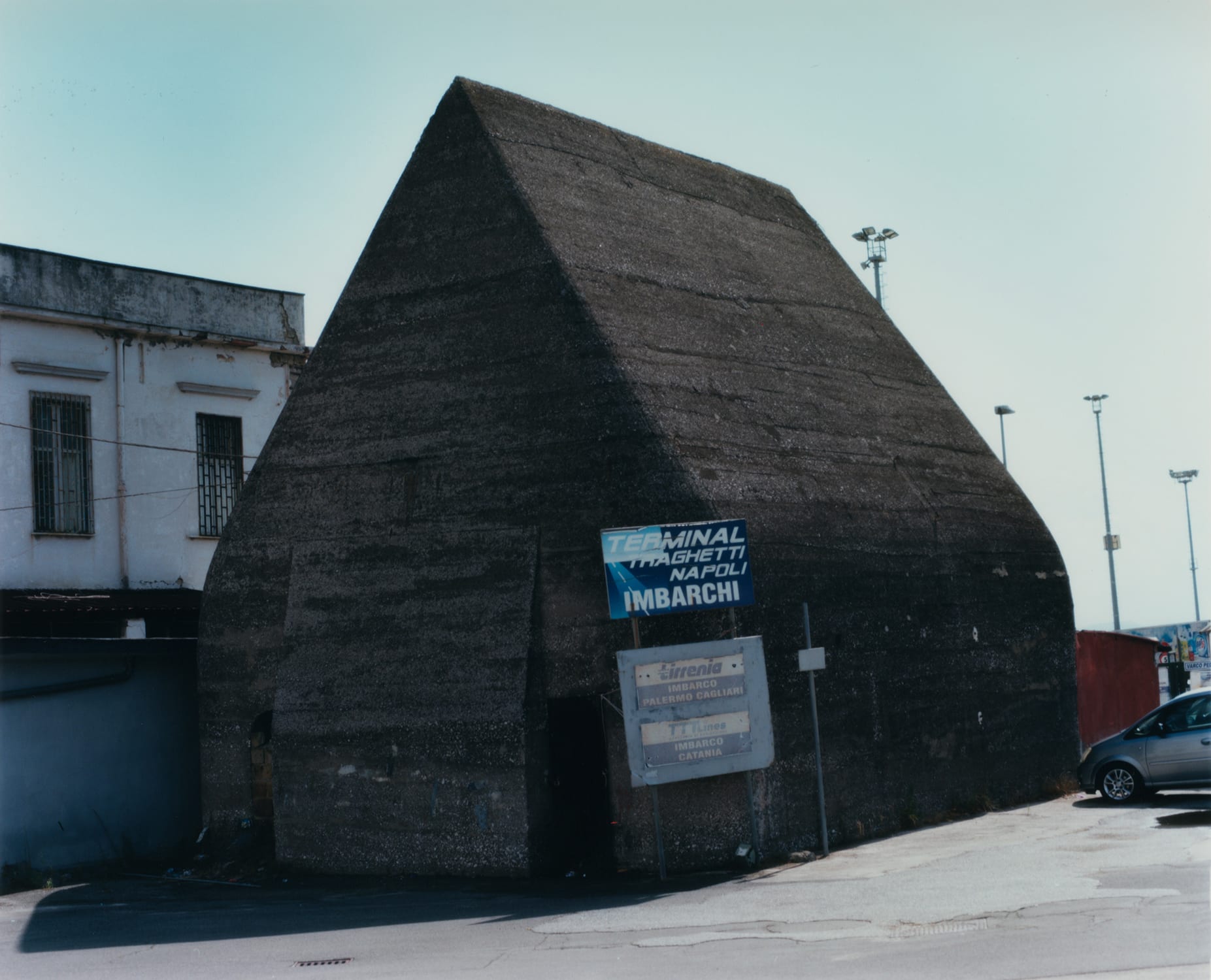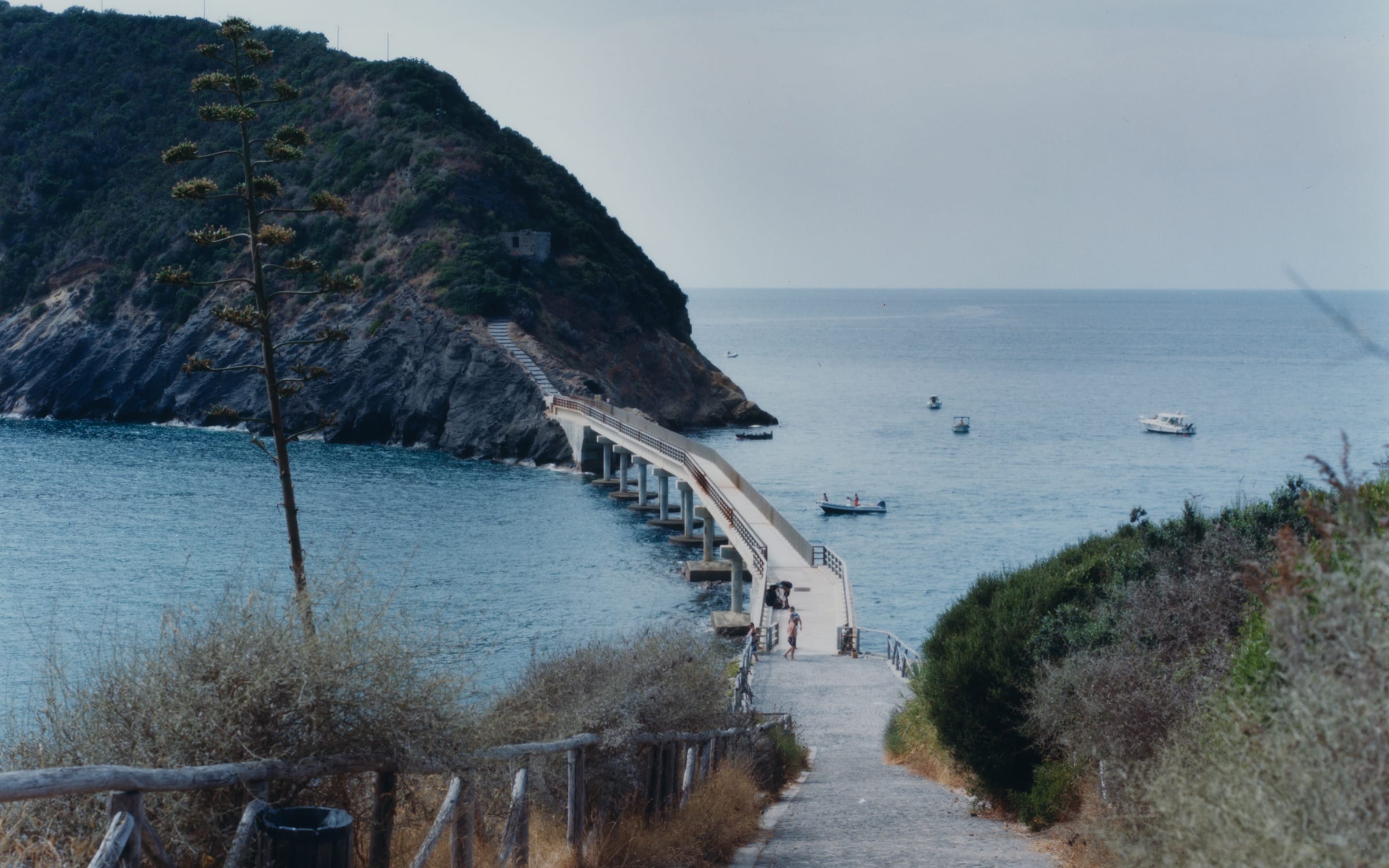If you are not Neapolitan, the chances are you have never been to Procida. The small island is often eclipsed by its glitzier neighbors, Capri and Ischia, but it is well worth investigating. ‘In Italy you can have incredible experiences if you go off the beaten track,’ says Gagosian’s Pepi Marchetti Franchi. ‘No wonder the artist Daniel Buren has a house on the island.’ The founding director of Gagosian’s Rome outpost, Marchetti Franchi should know: She’s a steadfast champion of contemporary art in Italy and a driving force behind ‘Panorama,’ an exhibition curated by Vincenzo de Bellis, Curator and Associate Director of Programs, Visual Arts, at the Walker Art Center, Minneapolis. The exhibition will take over the whole island early next month; ‘I imagine people literally bumping into art,’ says de Bellis.

Marchetti Franchi is the vice president of ITALICS, a consortium born during the first wave of the Covid-19 pandemic, which gathers together more than 60 of Italy’s most influential art galleries of contemporary, Modern, and pre-Modern art. At first, the initiative mainly took place online, but it is now ready to spread its wings in situ. ‘“Panorama” in Procida is an extension of our digital work which sought to present art in hidden corners of the Italian landscape, which is a big draw for both artists and collectors,’ Marchetti Franchi explains. It is also the first iteration in a series of in-person, possibly annual, exhibitions organized in collaboration with the other members of the consortium, which include Massimo de Carlo, Galleria Continua, and Lia Rumma.
Earlier this year, Procida was elected Italian Capital of Culture 2022, and its Director Agostino Riitano partnered with de Bellis to find the most arresting locations for the exhibition. The curator selected over 50 artworks for 31 locations including bars, restaurants, squares, and terraces located between the harbor and Palazzo d’Avalos, the stately palace used as a prison for most of the 20th century. ‘I explored three main motives – performance, immateriality, and monumentality – which interact with the history and the present of the island,’ says de Bellis. ‘It’s a laboratory working with Procida’s ecosystem, beyond tourism.’
Upon arrival, visitors will be greeted by Chen Zhen’s Back to Fullness, Face to Emptiness (1997-2009), a neon sculpture in the shape of a planet, presented by Galleria Continua at the harbor. They’ll also encounter Giuseppe Penone’s Equivalenze (2016), one of his iconic bronze sculptures, installed by Gagosian on Procida’s highest terrace, overlooking the mainland. The exhibition plays with appropriation and camouflage, with Frutta showcasing a necklace by Alek O in a jewelry store. Presented by T293, Patrizio Di Massimo’s paintings of the patron saint of Procida, San Michele, will be blessed during a fictional ritual mixing the sacred and profane. The show will also bring people together: working with kaufmann repetto, Adrian Paci, will organize an evocative performance about resilience in the square devoted to the lateIl Postinoactor, and local favorite, Massimo Troisi, while Elisabetta Benassi, who works with Magazzino, will tour the village in an old Piaggio Ape car shouting out the titles of artworks by Alighiero Boetti.
‘Panorama’ builds on a long-standing love affair between the artworld and the Naples area. Joseph Beuys thought the city was the ideal place for a revolution – a place where the idea of ‘people’ had not yet been betrayed by industrialization and profit. The Viennese Actionist Hermann Nitsch was attracted to the mystical side of the city and found a home at the Fondazione Morra, which now houses a museum dedicated to his work. Many other private initiatives foster encounters with the international art scene, from the collector-led Fondazione Morra Greco, Collezione Agovino, and Made in Cloister, to artist-run spaces such as Residency 80121 and Tarsia Naples. Their work often intertwines with the activity of art institutions such as Madre -Donnaregina Museum of Contemporary Art, Capodimonte Museum, and the National Archaeological Museum.

Gallerists have played a pivotal role too. A true grande dame of the Neapolitan scene, Lia Rumma will soon celebrate 50 years in the gallery business. She remembers her beginnings: ‘In 1966, my husband Marcello Rumma and I started the Rassegna d’Arte Internazionale in Amalfi, a project about art and life, and in 1968 we presented the exhibition ‘Arte Povera più Azioni Povere’ curated by Germano Celant which rejected the academic focus of the Venice Biennale.’ She recalls with glee: ‘It was magical, we were the avant-garde!’ When her husband suddenly passed away in 1970, she did not give up. The following year, Rumma opened her first gallery in a garage in the center of Naples with an exhibition by Joseph Kosuth, which was deemed too conceptual by most local collectors. ‘I had the cultural background and always followed my instinct; it has always been “sink or swim,”’ says Rumma. She now lives in the Palazzo Donn’Anna in Posillipo, an iconic building that is, she says, ‘always on the verge of collapsing into the sea, but resists, just like Naples.’
Dealer Alfonso Artiaco started his career in 1986, when key collectors like Ernesto Esposito were already very active. ‘In Naples people and places literally come to you,’ he says, recalling meeting the artists Thomas Hirschhorn and Anri Sala casually walking down the old Decumani roads, or when a common friend introduced him to Maria Thereza Alves, who lives in town with fellow artist Jimmie Durham. When he left his first gallery in Pozzuoli for Naples, Artiaco found a home in the former space of the dealer Lucio Amelio in Piazza dei Martiri, the elegant centre of the Chiaia neighborhood. Then, he nestled in the lively old town, in an undreamed-of 600 square meter space, only minutes away from the mesmerizing Sansevero Chapel Museum, which has since welcomed site-specific projects by gallery artists including Ann Veronica Janssens and Giulio Paolini.

‘Whoever comes to Naples will likely return,’ warns Federica Sheehan, the Director of Thomas Dane Gallery’s Neapolitan outpost since it opened in 2018. She’s lingering on the gallery’s breathtaking terrace in Chiaia, in what used to be the home of the intellectual Benedetto Croce, and, was later, the German Consulate. ‘This is why we have both an exhibition space and lodgings for our artists and collaborators,’ she adds, mentioning the visits and exhibitions of Glenn Ligon, Cecily Brown, and Luisa Lambri. The latter is also one of the many artists involved in ‘Pompeii Commitment: Archeological Matters’, the first long-term project devoted to contemporary art in Pompeii, curated by former Madre Museum Director Andrea Viliani. ‘Pompeii is now alive again, as a place of inspiration and production,’ says Viliani. ‘It will soon have its own contemporary art collection with some of the artists’ contributions.’
But Naples is not just about art and archeology. ‘In the 1980s and early 1990s, it was the pulsing hub of house and techno music in Italy with Marco Carola, Gaetano Parisio, and Davide Squillace, whose label This and That Lab has collaborated with ten of my gallery’s artists,’ says Giangi Fonti, founder of Galleria Fonti. The music scene was of seminal importance to Fonti, and led him to join Galerie Neu in Berlin in 1999. ‘I wanted to delve further into radical music and counterculture,’ he says, ‘and it paved the way to opening my own gallery in Naples in 2004, and representing political artists such as Daniel Knorr, Kiluanji Kia Henda, and Giulia Piscitelli, who will feature in the ‘Panorama’ exhibition with a series of abstract portraits.’ Galleria Fonti has been going strong ever since, acting as both a bridge to the international art scene and as a leading contributor to a rich local ecosystem, which is finally getting the attention it deserves.

Sara Dolfi Agostini is a writer, curator, and academic based between Naples and Malta.
All photography by Louis Canadas for Art Basel.